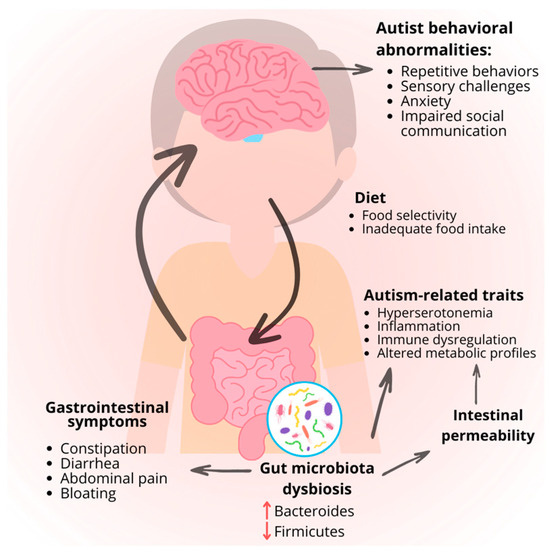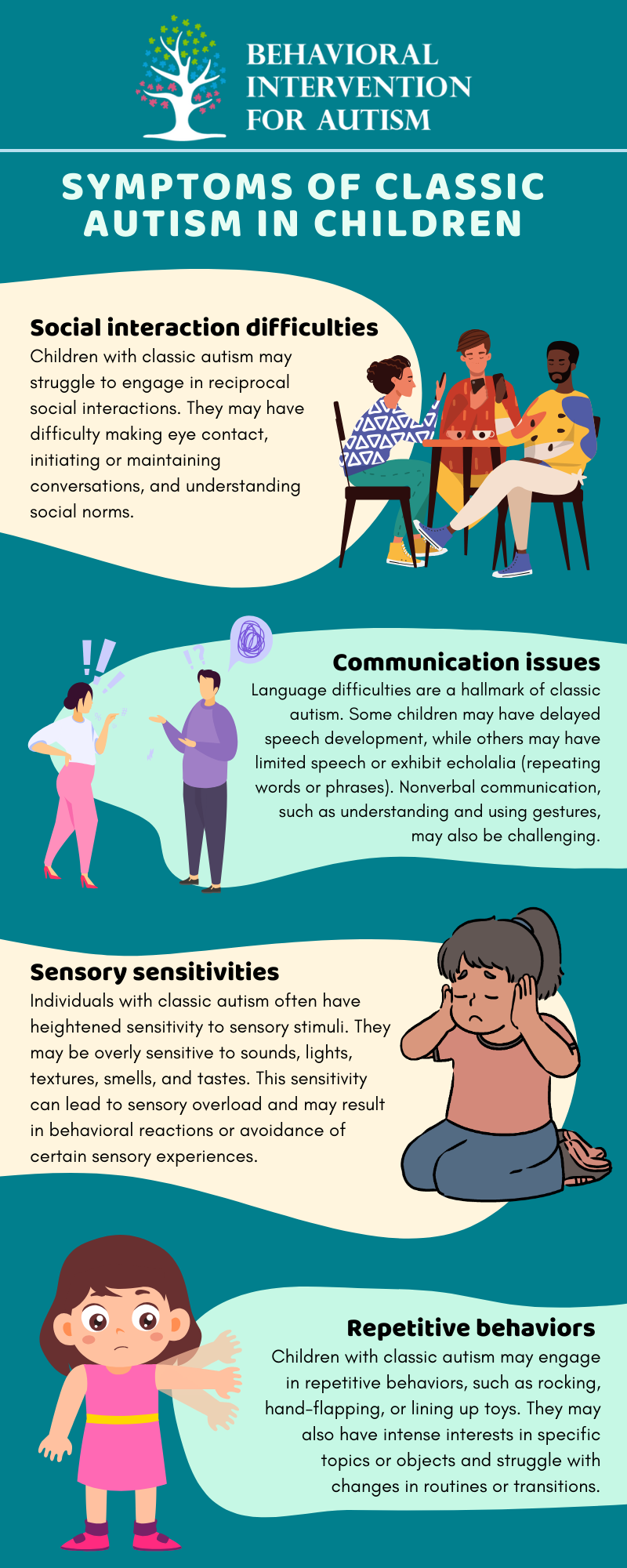Understanding the Influence of Behavioral Autism on Daily Life and Social Interactions
You might not recognize exactly how deeply behavioral autism impacts day-to-day live and social interactions. Individuals on the range typically navigate a world loaded with communication difficulties and sensory overload. These difficulties can result in irritation and isolation, impacting their relationships and overall health. Understanding these nuances is essential for fostering helpful environments. What approaches can we implement to create even more purposeful connections and inclusive rooms? The answers could amaze you.
Specifying Behavioral Autism and Its Characteristics
Behavioral autism, commonly described as autism spectrum condition (ASD), includes a range of conditions characterized by challenges in social interaction, communication, and repeated habits. You may discover that people with ASD frequently battle to interpret social hints, which can bring about misunderstandings in discussions. They might locate it difficult to develop eye contact or participate in little talk, making social situations really feel overwhelming.
Interaction problems can materialize in different means, from delayed speech growth to a preference for utilizing less words. Repetitive actions, such as hand-flapping or rocking, can act as coping mechanisms to take care of stress and anxiety or sensory overload. These characteristics can profoundly influence day-to-day life, making it important for you to recognize and sustain those with ASD. By identifying these attributes, you can promote a setting that promotes acceptance and encourages efficient interaction, assisting individuals with autism thrive in their everyday interactions.
The Spectrum of Autism: Understanding Variability in Behavior
Autism spectrum disorder (ASD) isn't a one-size-fits-all medical diagnosis; it differs commonly among individuals. You might notice that some people with ASD display light symptoms, while others might encounter more considerable obstacles. This variability can show up in behaviors, rate of interests, and sensory level of sensitivities. You may experience individuals that are extremely verbal and involve conveniently in conversations, while others may prefer singular tasks or connect non-verbally.
Moreover, the method individuals with ASD react to sensory input can vary greatly; some could be overwhelmed by brilliant lights or loud sounds, whereas others prosper in promoting atmospheres. The spectrum also includes differences in social communications; some individuals may struggle to interpret social hints, while others navigate social settings with family member ease. Recognizing this variability is important, as it assists you appreciate each individual's distinct experience and tailor assistance to their particular needs, cultivating an extra inclusive setting for everyone.
Interaction Difficulties Encountered by People With Autism
When you connect with people on the autism range, you might notice their one-of-a-kind interaction obstacles. They typically deal with difficulties with both spoken and nonverbal signs, which can impact their social communications. Comprehending these barriers is necessary for cultivating better links and assistance.

Verbal Communication Problems
Numerous people on the autism spectrum experience verbal communication problems that can significantly impact their day-to-day interactions. You could discover it challenging to share your thoughts, sensations, or requires clearly. This can bring about aggravation for both you and those around you, as misconceptions happen. You may battle with starting discussions, preserving a subject, or comprehending subtleties in speech. Usually, you might like making use of basic language or repetitive phrases, which can restrict your capability to take part in much deeper discussions. Your tone, volume, or rate may not straighten with social expectations, triggering others to misinterpret your intentions. Acknowledging these challenges can assist you and your assistance network develop strategies to improve communication and cultivate far better links with others in your day-to-day life.
Nonverbal Interaction Barriers
Verbal interaction isn't the only difficulty individuals on the autism range face; nonverbal interaction obstacles can be simply as significant. You might discover it hard to translate body language, faces, and eye contact, which are necessary for efficient interaction. These challenges can cause misconceptions or misinterpretations of social signs, making communications feel frustrating or confusing. You might struggle to share your own feelings via nonverbal ways, leaving others unclear of your intents or sensations. This separate can develop sensations of isolation and stress. Identifying these barriers is important for fostering understanding and compassion in your communications. By addressing nonverbal communication, you can discover approaches to boost your social experiences and boost your total lifestyle.
Social Interaction Influences
Social interactions can commonly feel frustrating due to the unique interaction challenges faced by individuals with autism. Recognizing these challenges can help you find approaches to enhance interaction, such as practicing social skills in safe setups or using visual aids. Understanding your requirements permits you to browse social interactions with greater self-confidence and convenience.
Social Communication and Connection Building in Autism
While building partnerships can be testing for individuals with autism, understanding their one-of-a-kind perspectives and communication styles can cultivate significant links. You could notice that numerous people on the spectrum choose straight communication and may battle with social cues or little talk. By being uncomplicated in your communications, you can assist create an atmosphere where they really feel comfy.
Involving in shared passions can also serve as a bridge to much deeper links. Whether it's a hobby, a favored program, or a mutual enthusiasm, these typical threads moved here can open doors to relationship.
Every Day Life Routine: Browsing Challenges and Methods
Navigating life regimens can be specifically challenging for people with autism, specifically when unforeseen modifications take place. You may find comfort in having a structured schedule, as it helps you anticipate what's next. When disturbances happen, it's normal to really feel overwhelmed or nervous. To navigate these obstacles, think about applying visual timetables or checklists. These devices can provide quality and peace of mind.
Establishing a regimen that includes sensory breaks can likewise be beneficial. This helps produce an understanding setting.
Lastly, technique mindfulness methods to handle tension and stress and anxiety. Basic breathing workouts or basing techniques can make a substantial distinction. By incorporating these methods, you can improve your everyday regimen and minimize disturbances, making life feel more workable.
Strengths and Capacities of People on the Autism Range
Recognizing everyday life regimens is just one aspect of the autism experience. Many people on the autism spectrum have amazing staminas and capabilities that set them apart.
Furthermore, your memory abilities usually radiate, particularly in areas of rate of interest. Aba Therapist. This flair for retaining info can make you a beneficial resource in fields like art, science, or innovation. You may additionally display solid visual thinking, allowing you to visualize intricate principles and solve issues creatively
In addition, your one-of-a-kind viewpoint on the globe can foster empathy and understanding in others, enhancing social communications. Accepting these strengths not only enhances your self-confidence yet additionally assists others appreciate the diverse abilities you give the table.
Producing Comprehensive Atmospheres for People With Autism
Developing inclusive atmospheres for people with autism begins with designing sensory-friendly areas that satisfy their unique demands. You can also promote chances for social communication, assisting to construct friendships and connections. By making these adjustments, you'll add to an extra welcoming ambience for everybody.
Designing Sensory-Friendly Spaces
While creating sensory-friendly areas, it's vital to mirror on the unique requirements of people with autism. Include peaceful zones where people can pull away and charge when bewildered. Include aesthetic routines or clear signs to help individuals navigate the space with confidence.
Advertising Social Interaction Opportunities
Creating sensory-friendly spaces not only addresses individual comfort yet also sets the phase for purposeful social communications amongst people with autism. Encourage peer mentoring, matching people with autism with encouraging peers who can guide them with social scenarios. By applying these techniques, you can improve social opportunities, helping individuals with autism build relationships and enhance their social skills in a risk-free, welcoming atmosphere.

Regularly Asked Concerns
Just How Can Friends Support A Person With Behavioral Autism?
You can support a pal with behavior autism by holding your horses, listening actively, and respecting their limits. Take part in tasks they enjoy, connect honestly, and produce a comfortable setting where they really feel valued and understood.
What Resources Are Offered for Parents of Kid With Autism?
You can discover numerous resources for moms and dads of kids with autism, including support teams, instructional sites, and neighborhood social work. Getting in touch with other moms and dads can also provide valuable insights and shared experiences to help browse challenges.
Can Behavioral Autism Change With Time?

Yes, behavior autism can transform in time. You could notice shifts in communication, social skills, and actions as your child expands. Early intervention and support often play vital duties in these developing modifications.
Exactly How Do Sensory Sensitivities Affect Every Day Life?
Sensory level of sensitivities can make daily experiences frustrating. You may deal with loud sounds or bright lights, causing tension or avoidance. Finding atmospheres that accommodate your anchor demands can substantially boost your comfort and general day-to-day live.
What Are Usual Misconceptions About Behavioral Autism?
You might believe behavioral autism just affects communication abilities, but it's more facility. Lots of think individuals lack empathy or knowledge, which isn't true. Comprehending these mistaken beliefs helps foster approval and support for those on the range.
Behavioral autism, often referred to go as autism spectrum problem (ASD), includes a variety of problems identified by difficulties in social communication, communication, and recurring behaviors.Social communications can frequently feel frustrating due to the unique interaction difficulties encountered by individuals with autism.Designing sensory-friendly spaces not only addresses specific comfort however likewise establishes the stage for purposeful social interactions amongst people with autism. Motivate peer mentoring, coupling individuals with autism with encouraging peers who can lead them with social situations. By carrying out these approaches, you can enhance social chances, helping individuals with autism develop relationships and reinforce their social skills in a secure, inviting atmosphere.
Comments on “How to spot an effective Autism Behavioral Therapy”